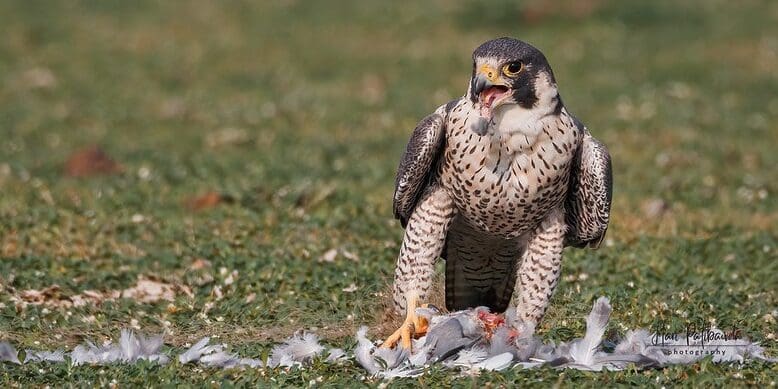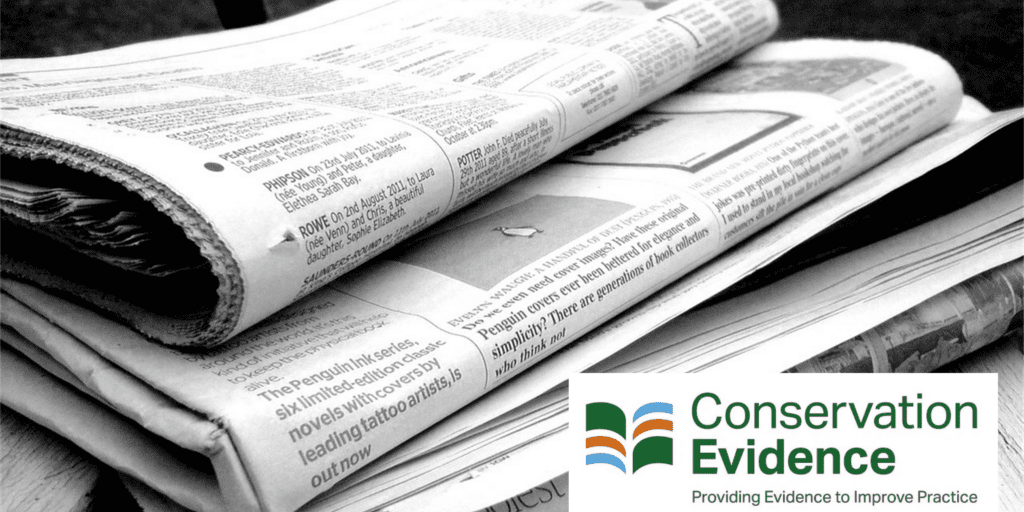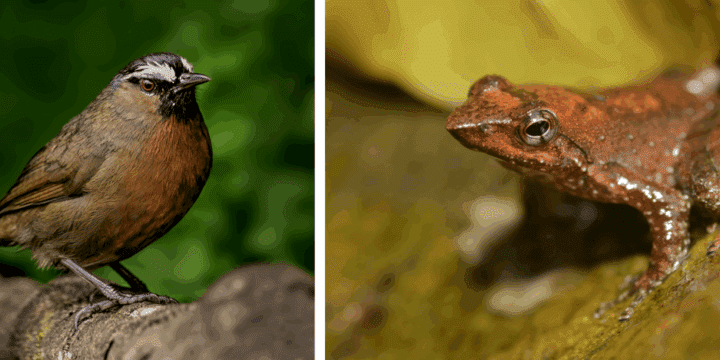Making conservation evidence from citizen science accessible
Francesca is an Ecological Modeller at the UK Centre for Ecology & Hydrology, where she works primarily with citizen science data to produce species trends and identify the drivers of biodiversity change.
framan@ceh.ac.uk; @Frances_Mancini

The UK has a long tradition of monitoring biodiversity through citizen science (Pocock et al, 2015). Since the 1970s hundreds of volunteer-led wildlife recording schemes have been established (Local Environmental Records Centres – LERCs – UK Butterfly Monitoring Scheme, National Plant Monitoring Scheme), producing a vast quantity of data on the distribution and abundance of wildlife species. For over 50 years the Biological Records Centre (BRC) has been supporting recording schemes and societies, collating a huge database of over 96 million records for over 10,000 species. This data is a great resource to monitor the status of biodiversity in the UK.

Despite this long history of biodiversity monitoring and the wealth of data it has produced, it remains challenging to derive robust conservation evidence from citizen science data. This is because these records have been collected opportunistically, without a standardised protocol or sampling design. Because of this, data from citizen science schemes are notoriously noisy and contain several biases (Isaac and Pocock, 2015), which, if not accounted for in analysis, can produce inaccurate metrics of biodiversity change. Despite these challenges, recent scientific advances make it possible to realise the potential of citizen science data (van Strien et al, 2010). Researchers at BRC have developed modelling frameworks capable of accounting for the main known biases present in citizen science records (Isaac et al., 2014), making the most of all available data to produce cohesive summaries of biodiversity trends (Isaac et al., 2020). We have also developed software to implement the modelling framework (August et al., 2019) and produce multispecies indicators (August et al., 2020). All of this work has made it possible to produce official assessments of biodiversity status from citizen science data, such as the UK Biodiversity Indicators and the State of Nature Reports.
As advocates of open and transparent science, BRC researchers have made a great effort to make all research outputs available to other users, including making data open access (National Biodiversity Network Gateway), software open source and sharing distribution trends for over 5000 species (Outhwaite et al, 2019). Despite this effort, most of these outputs remain beyond the reach of non-academic users. Implementing these models of citizen science data requires considerable statistical expertise and programming skills, not to mention computational resources. Most conservation organisations simply do not have the resources or expertise to apply these methods to their data so all of these technical advances remain inaccessible to most end users.
Access to this scientific knowledge and tools is particularly important in the current environmental policy landscape. Environmental issues have become prominent in the public debate and this has prompted a policy response from the UK and devolved Governments, leading to the creation of policies such as the 25 Year Environment Plan in England, the Future Generations Act in Wales, and the Environment Strategy for Scotland and Northern Ireland. These policies aim to halt biodiversity loss and restore healthy and productive ecosystems, by empowering devolved administrations and local communities to look after their environment for the benefit of nature and society. Demand for landscape-scale assessments of biodiversity status has never been higher, due to the launch of Local Nature Recovery Strategies (LNRS), reforesting and rewilding initiatives and new funding (e.g. natural capital and ecosystem assessment) for post-Brexit green recovery. Evaluating the success of these policies and initiatives requires monitoring biodiversity to establish a baseline and track progress towards biodiversity targets.

The community of conservation practitioners faces the task of producing assessments of biodiversity status from, mostly, unstructured citizen science data without having access to the tools to complete this task. Over the next three years I will be working to bridge this gap between the latest advances in data science and conservation stakeholders, by translating methodological innovations in biodiversity monitoring and analysis into a form that is directly accessible to them. My NERC Knowledge Exchange Fellowship “Bringing the Data Revolution to Nature Recovery” aims to co-develop solutions to allow conservation organisations to use state-of-the-art data science techniques to produce indicators of biodiversity status. These solutions can include: in depth user documentation and best-practice guidelines for ecological software; using cloud computing platforms to share data and reproducible workflows as well as providing access to computational resources; user interfaces that will allow stakeholders to interact with data and model outputs without the need for technical expertise. The ultimate goal of this project is to create a community of practice around data science for conservation, where practitioners and policy makers will no longer need to rely on researchers and data scientists to monitor their environment and assess the impact of their policies and interventions on biodiversity.
There is great need for on-the-ground solutions to deliver national environmental policies at the local scale and this Knowledge Exchange project has the potential to meet this demand by making biodiversity data and data science tools more accessible. Ultimately, this will help national and local organisations achieve their biodiversity targets by increasing the usability of species monitoring data and supporting an evidence-based approach to nature recovery.
References
August, T. et al. (2019) ‘sparta: Trend Analysis for Unstructured Data’. Available at: https://github.com/BiologicalRecordsCentre/sparta.
August, T. et al. (2020) ‘BRCindicators: Creating multispecies biodiversity indicators’. Available at: https://github.com/BiologicalRecordsCentre/BRCindicators.
Isaac, N. J. B. et al. (2014) ‘Statistics for citizen science: Extracting signals of change from noisy ecological data’, Methods in Ecology and Evolution, 5(10), pp. 1052–1060. doi: 10.1111/2041-210X.12254.
Isaac, N. J. B. et al. (2020) ‘Data Integration for Large-Scale Models of Species Distributions’, Trends in Ecology and Evolution, 35(1), pp. 56–67. doi: 10.1016/j.tree.2019.08.006.
Isaac, N. J. B. and Pocock, M. J. O. (2015) ‘Bias and information in biological records’, Biological Journal of the Linnean Society, 115(3), pp. 522–531. doi: 10.1111/bij.12532.
Outhwaite, C. L. et al. (2019) ‘Annual estimates of occupancy for bryophytes, lichens and invertebrates in the UK, 1970-2015’, Scientific data, 6(1), p. 259. doi: 10.1038/s41597-019-0269-1.
Pocock, M. J. O. et al. (2015) ‘The Biological Records Centre: A pioneer of citizen science’, Biological Journal of the Linnean Society, 115(3), pp. 475–493. doi: 10.1111/bij.12548.
van Strien, A. J. et al. (2010) ‘Site-occupancy models may offer new opportunities for dragonfly monitoring based on daily species lists’, Basic and Applied Ecology, 11(6), pp. 495–503. doi: 10.1016/j.baae.2010.05.003.



